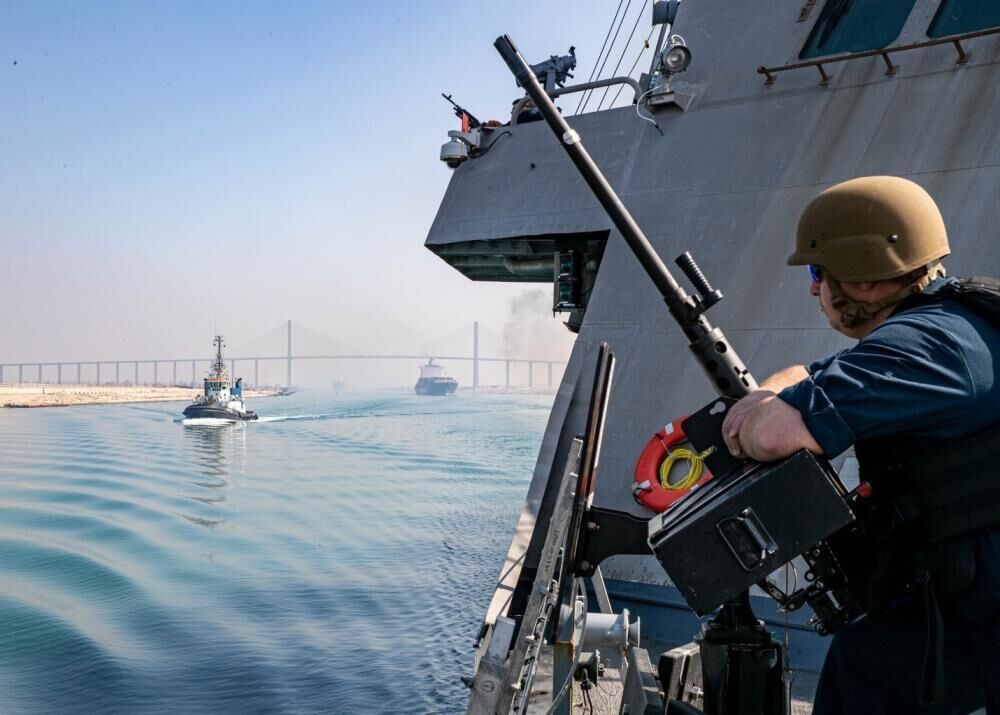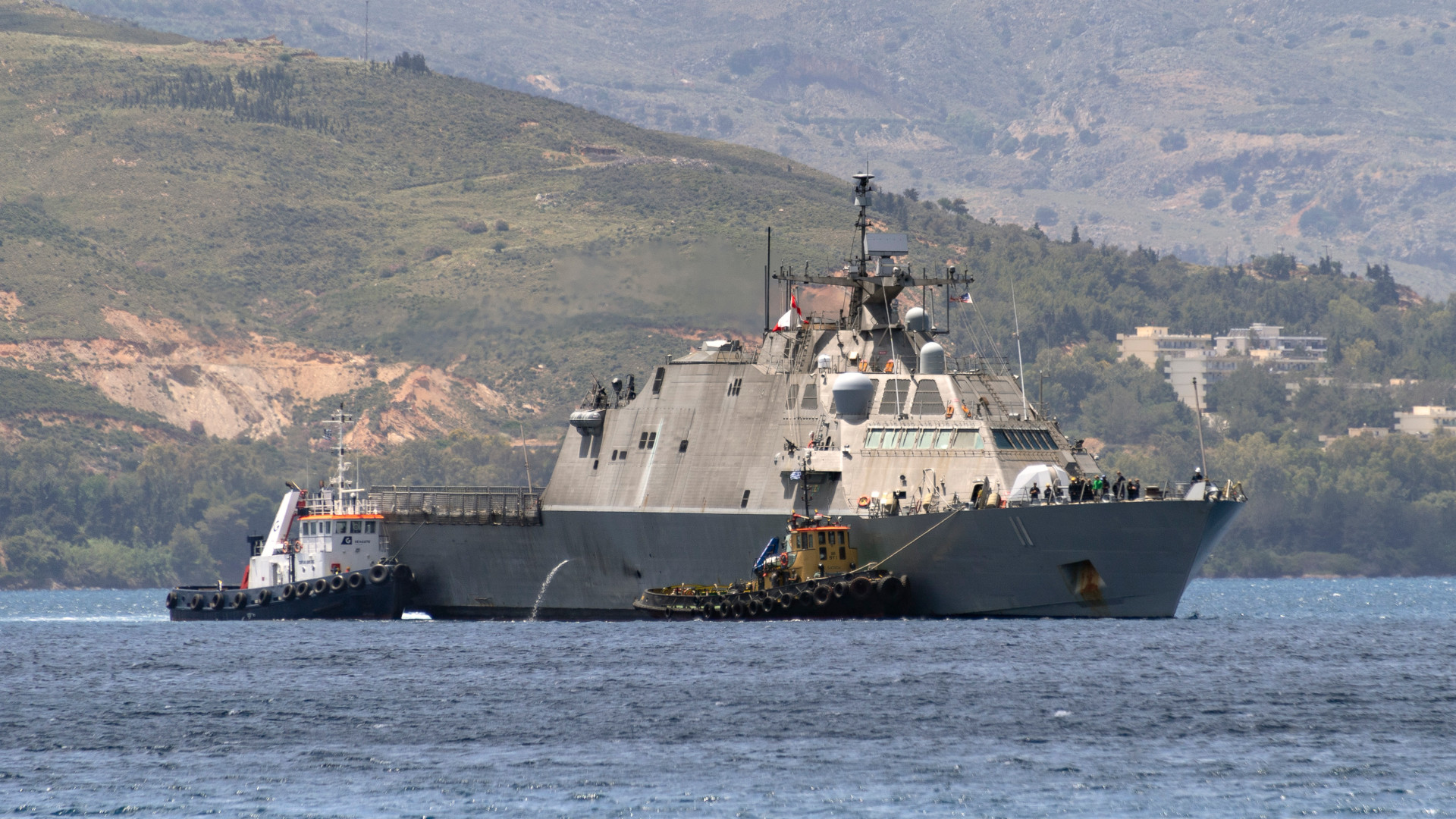The Freedom class USS Sioux City recently became the first of either of the U.S. Navy’s two types of Littoral Combat Ship to deploy to Middle Eastern waters. The service has long said that these vessels, the first of which entered service in 2008, would be ideally suited to operating in the region. However, this historical trip comes as the Navy now plans to decommission and potentially sell off all of its existing Freedom class ships due to a design flaw, combat relevancy, and other considerations.
USS Sioux City and its crew of 75 arrived in the Navy’s U.S. 5th Fleet area of responsibility on May 28, after transiting into the Red Sea from the Mediterranean Sea via the Suez Canal, according to a press release. 5th Fleet oversees the bulk of the service’s activity in the Middle East, as well as in the Horn of Africa region. Earlier this month, Sioux City had also become the first LCS of any kind to operate in European waters.

Sioux City is now assigned to Combined Task Force 153 (CTF 153), a recently established U.S.-led multinational naval force that is “focused on maritime security and partner capacity building in the Red Sea, Bab al-Mandeb [Strait,] and Gulf of Aden,” according to the Navy. CTF 153 is one of four international maritime task forces now operating under 5th Fleet’s auspices.
“We’re excited to welcome a littoral combat ship to the Middle East for the first time,” said Vice Adm. Brad Cooper, commander of U.S. Naval Forces Central Command, U.S. 5th Fleet, and Combined Maritime Forces, said in the Navy’s press release. “Sioux City’s arrival is not only historic but essential to regional maritime security given its immediate integration with our new multinational naval task force.”
“We’re thrilled to have Sioux City join our team,” said Capt. Robert Francis, commander of CTF 153, in a statement of his own. “They’ve worked collaboratively in bringing enhanced capabilities to other regions and that’s certainly what we’re looking forward to here in the Middle East while operating with our international partners.”
Before heading to Europe and the Middle East, Sioux City conducted multiple counter-drug deployments in the Caribbean Sea and the Eastern Pacific Ocean, which have the most common missions for Navy Freedom class LCSs to date. In April, 2021, the vessel seized 600 kilograms of cocaine with an estimated street value of $24 million from drug traffickers, the Navy said. That October, the ship seized nearly 500 kilograms of cocaine worth $20 million in the Caribbean.
During its time with CTF 153, Sioux City could find itself doing similar interdiction work. Other Navy warships have operated in the Red Sea, the Bab al-Mandeb Strait, and the Gulf of Aden for years now intercepting illegal drugs, as well as illicit arms shipments often suspected to be bound for Iranian-backed Houthi militants in Yemen or terrorist groups in Somalia.
The Navy has for years highlighted how LCSs would, or at least should have been ideally suited to these and other similar kinds of operations in the Middle East, helping to free up larger warships for higher priority missions and being just generally cheaper to operate. Just last year, the service highlighted how LCSs could help fill the gap resulting from the plan to divest all its much smaller Mk VI patrol boats, many of which are forward-deployed in Bahrain.
Unfortunately, the Freedom and Independence class LCSs have long failed to live up to expectations more than a decade after the first of these ships were commissioned. The Navy disclosed last year that it was costing them nearly as much to operate and maintain each one of these ships as a much larger and far more capable Arleigh Burke class destroyer.
The Navy has made some limited progress in expanding the capabilities of its Independence class LCSs in recent years, and expanded their deployments in the Pacific region. However, it emerged earlier this month that those ships may be experiencing significant fleet-wide cracking issues that may impose limits on how and where they can sail.
The state of the Freedom class is significantly worse. The Navy is pushing to decommission all nine of its examples of this LCS type, including the Sioux City, which only entered service in 2018. There are four others that are now on the chopping block that are even younger than Sioux City.

This decision was driven in part by a critical design flaw in the propulsion system on these ships. This defect contributed to the scrapping of what had been expected to be the first deployment of a Freedom class LCS to the Middle East, as well as Europe, back in 2020.
Issues with an anti-submarine warfare mission package that the service now wants to axe were another factor. Both LCS types were originally supposed to have increased flexibility thanks to readily interchangeable mission modules, a concept that is now effectively dead. Future Constellation class frigates are now expected to provide the desired additional anti-submarine warfare capacity.
In defending these proposed courses of action, which have drawn major criticism from Congress, Adm. Michael Gilday, the Navy’s Chief of Naval Operations, even brought up selling off some of the vessels, possibly to allies or partners, during a May 26 hearing before the Defense Sub-Committee of the United States Senate Committee on Appropriations. According to budget documents, this plan would also ‘save’ the Navy an estimated $ 3.6 billion, which it could then use to fund other priorities efforts.

So, just like Sioux City’s ‘milestone’ appearance in European waters, its arrival in the Middle East Region is at best bittersweet. Exactly what contributions it will make as part of CTF 153 and while otherwise operating under the oversight of the 5th Fleet remain to be seen.
Contact the author: howard@thewarzone.com
